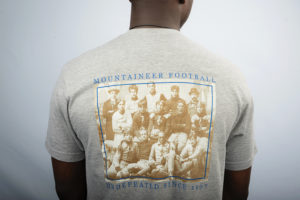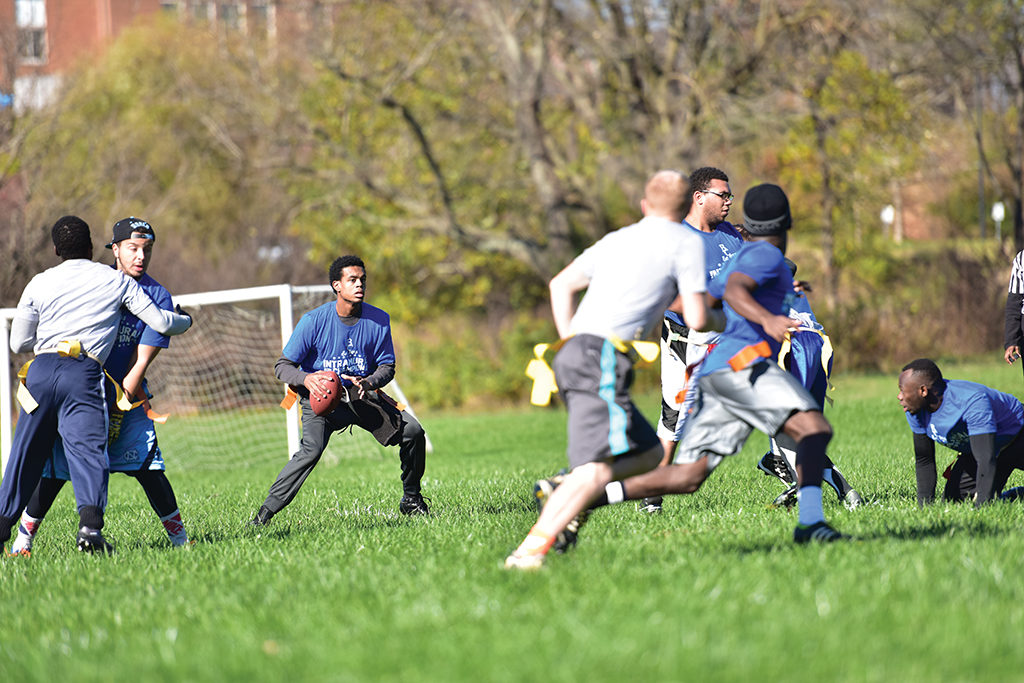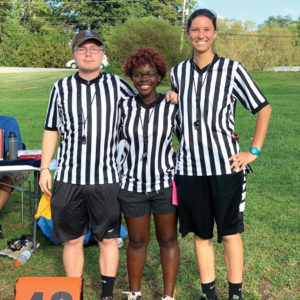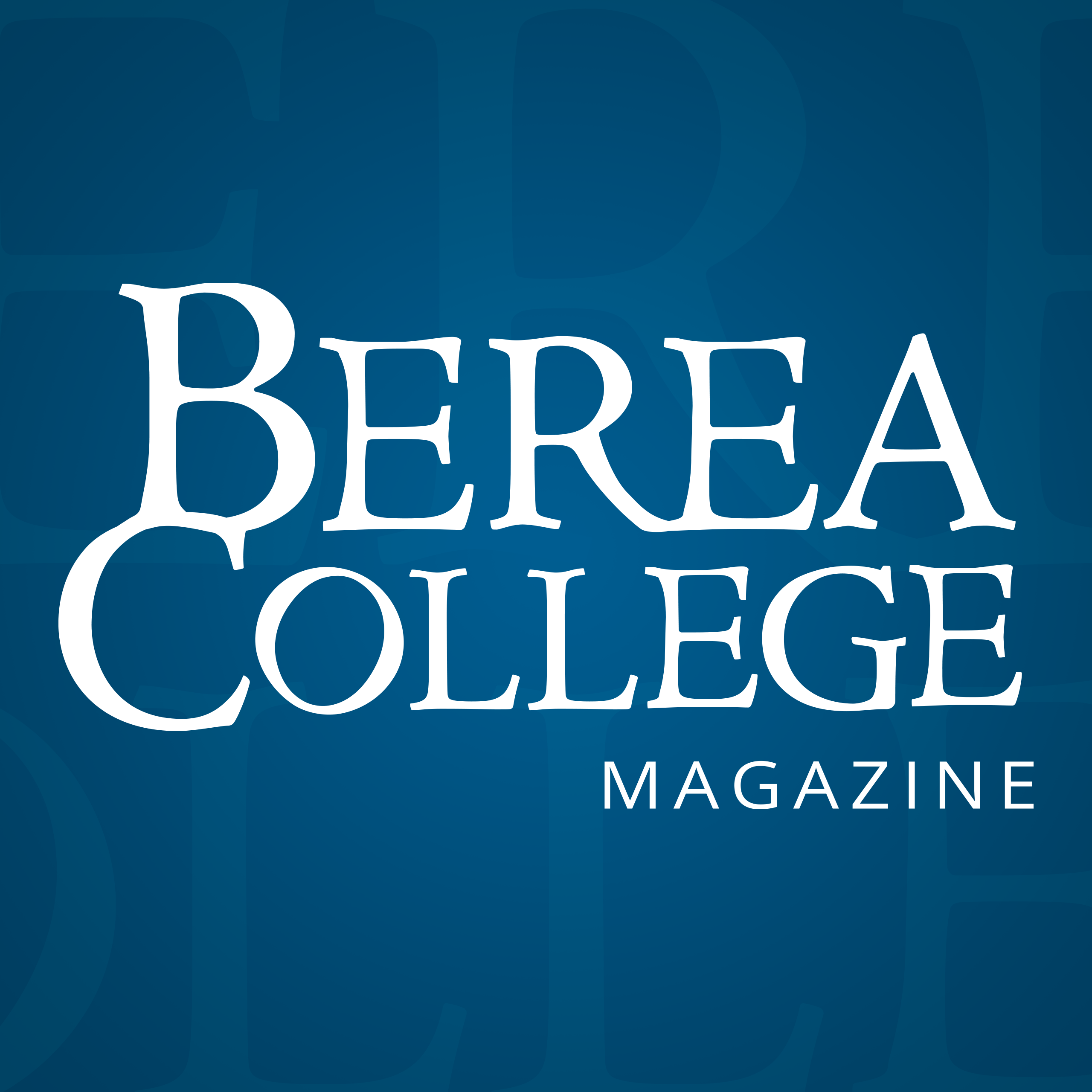One of the most popular T-shirts for sale in the Berea College Visitor Center and Shoppe presents the image of an early 20th century football team. It reads: “Mountaineer Football: Undefeated Since 1907.”
That’s a fun joke because the early 1900s was the last time Berea College fielded an actual intercollegiate football team.

“It’s one of our most popular T-shirts,” said Susan Buckmaster, the College’s director of retail sales and business development. “We continue to have to place reorders for it.”
Ask around campus about what happened to the football team, and you’ll likely hear a variation of a legend that’s been passed around for decades: the son or relative of a donor or trustee was killed during a game, and the donor or trustee would only continue their support if the football program was disbanded.
The story is untrue, though football in those days was arguably more violent and more dangerous than the sport we know today. In the photo of the 1902 football team, one may notice the lack of protective gear. There seems to have been only a few shin guards, three sets of shoulder pads, six nose guards, and two helmets. Writings from people of the time reveal the players used whatever hand-me-down protection they could find lying around, leaving no one fully protected.

In the early 1900s, the Berea College footballers, one of the only integrated teams in the country, traveled mostly by horse and wagon to play nearby schools regardless of school size or budget. They played small liberal arts schools like Centre College (Danville, Ky.) as well as State University, which would become the University of Kentucky.
The team was truly a student initiative. When the coach of Transylvania College in Lexington asked to speak with their coach, the ragtag gridiron toughs replied, “What’s a coach?” Though alumni offered to pay for a coach, President William Frost declined, opposed to intercollegiate sports in general because he viewed them as a distraction from the College’s mission to educate mountain youth so they may return to the mountains and educate others.

By the 1910s, Berea College football had become a sport played only within the Berea constellation of schools: the Normal School, the junior high and the Academy. It may seem odd that a college team would play a junior high team, but junior high was different then. To board at the school, junior high students had to be at least 16, and the oldest was 27.
In the 1920s, football became intramural only, and in the early 1930s tackle football was replaced with flag football, which continues to this day. “There have been many different kinds of teams,” said Michael Thomas ’13, program associate for Student Life and coordinator of Campus Recreation.

More than 500 people have participated in flag football since 2012, along with an untold number of players since the 1930s. Like that rugged 1902 team, the students today select their own teams, also inviting professors and labor supervisors to participate. If a single player has difficulty finding a team, Thomas helps them to find one.
In 2019, football remains a highly competitive, highly popular intramural sport on campus, without those silly- looking nose guards.


